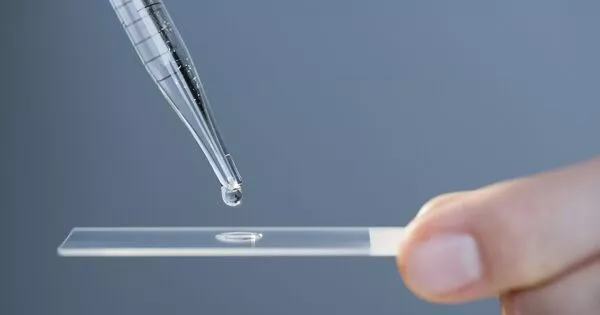A microscope slide is a thin flat piece of glass that is typically 75 by 26 mm (3 by 1 inch) in size and about 1 mm thick and is used to hold objects for examination under a microscope. A specimen holder is a flat piece of glass or other transparent material used to hold a specimen for examination under a microscope. Typically, the object is mounted (secured) on the slide before being inserted into the microscope for viewing. It is an essential component of microscopy, allowing scientists, researchers, and students to examine objects on a microscopic scale. This configuration enables several slide-mounted objects to be quickly inserted and removed from the microscope, labeled, transported, and stored in appropriate slide cases or folders, and so on.
Microscope slides are frequently used in conjunction with a cover slip or cover glass, which is a smaller and thinner sheet of glass placed over the specimen. Slide clips, slide clamps, or a cross-table are used to achieve precise, remote movement of the slide upon the microscope’s stage (such as in an automated/computer-operated system, or when touching the slide with fingers is inappropriate due to the risk of contamination or lack of precision). Frosted magnifying glass (76mm-20mm)×26mm×0.9mm) slides 50 images in one box.
Here are some key features and aspects of microscope slides:
- Material: Microscope slides are traditionally made of glass, but they can also be made of other materials such as plastic or quartz. Because of their transparency, durability, and ease of cleaning, glass slides are the most commonly used.
- Size and Dimensions: Microscope slides typically have standardized dimensions of 75 mm (3 inches), 25 mm (1 inch), and a thickness of about 1-1.2 mm. Most microscope mechanical stages can accommodate slides with these dimensions.
- Preparation: The slide is frequently cleaned before placing a specimen on it to remove any contaminants. Depending on the nature of the specimen and the information desired, the specimen is then mounted on the slide using various techniques such as wet mounts, dry mounts, or stained mounts.
- Cover Slip: In many cases, a cover slip (or coverslip) is placed over the specimen on the slide. The cover slip is a smaller, thinner, and usually square or rectangular piece of glass that helps protect the specimen and prevents it from drying out. It also helps to flatten the specimen for clearer observation.
- Labeling: Microscope slides are often labeled with information such as the type of specimen, the staining method used, and any relevant details about the preparation. Proper labeling is essential for accurate documentation and future reference.
Storage
To protect slides from dust and damage, they are typically stored in slide boxes or slide trays. Proper storage keeps the specimens in good condition for future use.
Application
Microscope slides are used in a variety of scientific disciplines, including biology, pathology, botany, and microbiology. They are critical in the examination and analysis of microscopic structures and organisms.
















